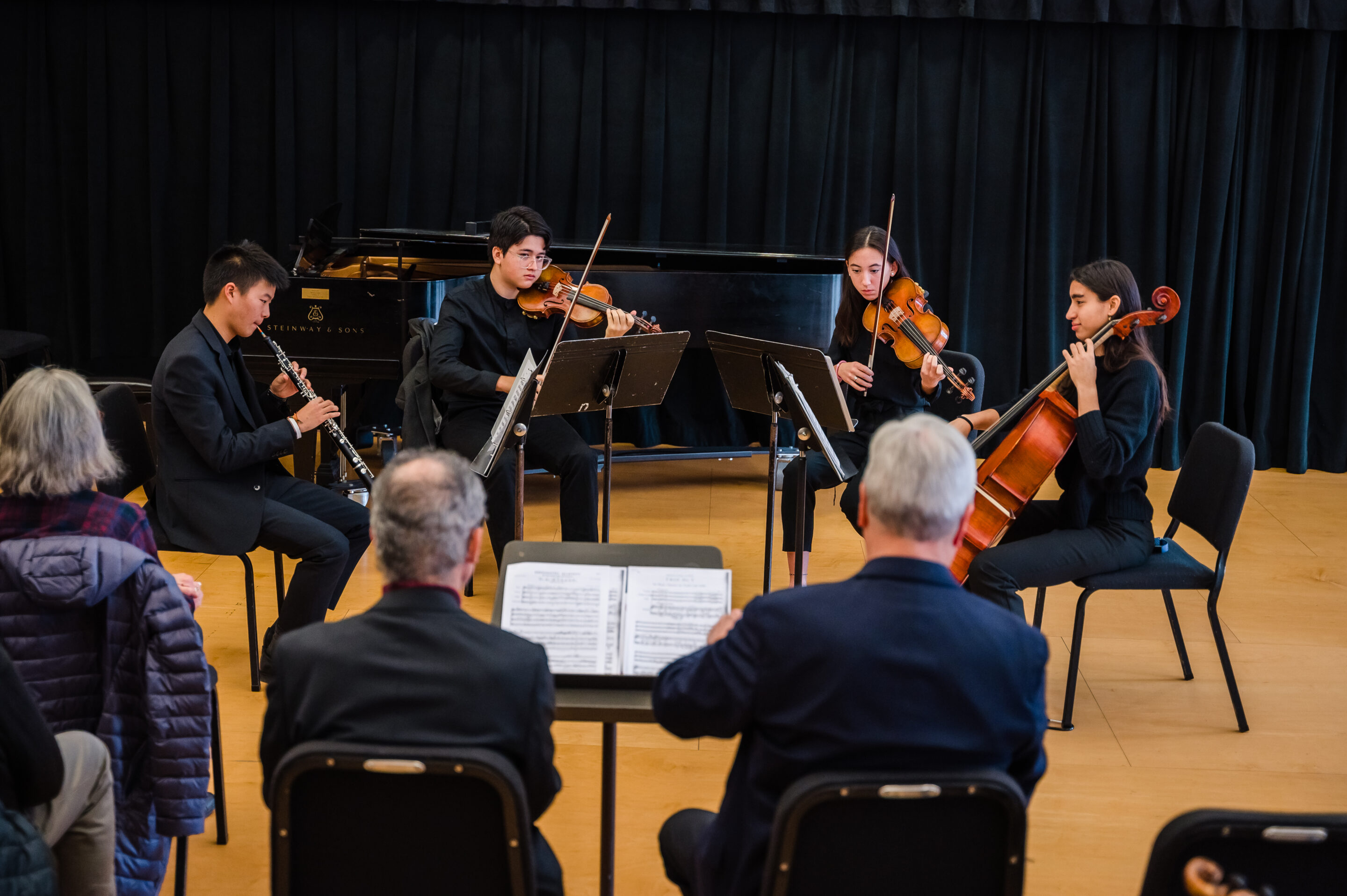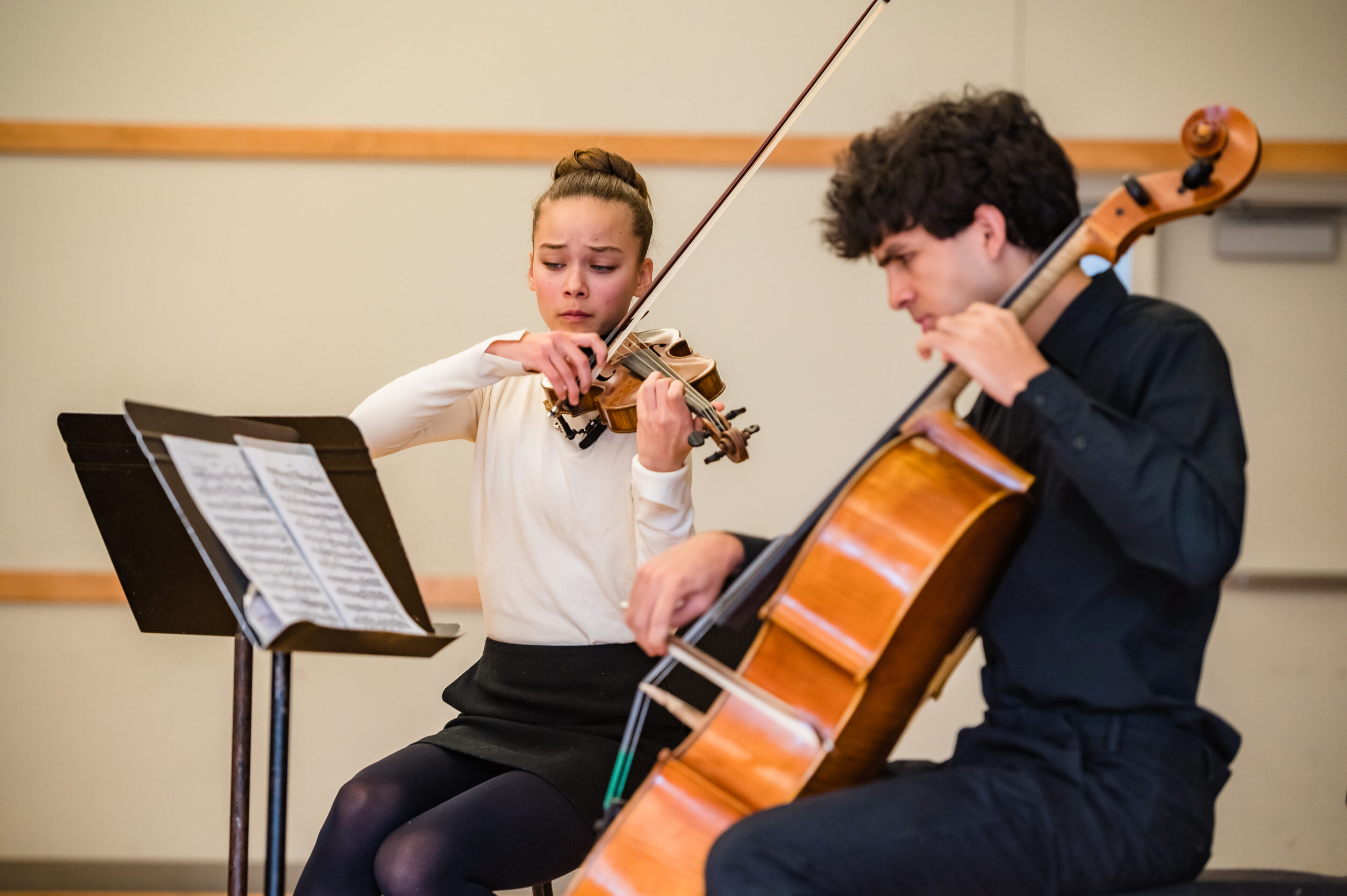
Chamber music refers to “a form of classical music that is composed for a small group of instruments—traditionally a group that could fit in a palace chamber or a large room.” Pieces generally include a small number of performers, with each performer playing a unique part. Examples of common chamber ensembles include string quartets, wind instrument quartets, and piano trios. Chamber singers, also known as a chamber choir, are likewise composed of small groups of vocalists.
Because of its small size and history of being played within the home and other intimate settings, chamber music has been called “the music of friends.” It is “suited to the expression of subtle and refined musical ideas” and features “refinement, economy of resources, and flawless acoustical balance.” This can be seen in some of the most well-known chamber pieces, including:
- Dvorák’s String Quartet No. 12 “American”
- Ravel’s String Quartet
- Janácek’s String Quartet No. 2 “Intimate Letters”
- Debussy’s Sonata for flute, viola, and harp
- Messiaen’s Quartet for the End of Time
- Tchaikovsky’s String Quartet No. 1
What is a chamber orchestra?
A chamber orchestra can be differentiated from a symphony orchestra or philharmonic orchestra by the number of members. Although multiple performers in a chamber orchestra may be playing the same instrument, each will be playing a distinct part of the composition. Additionally, chamber orchestras generally play without a conductor, and therefore require unique musical skills and dynamics.
The History of Chamber Music
Chamber music first developed in the Renaissance period when people often gathered to play music as a social activity. In the Baroque period, these types of pieces composed for small groups of musicians grew in popularity. Trio sonatas were a particular favorite. Some of the most well-known Baroque chamber music was composed by Johann Sebastian Bach and includes his Sonata in G Major for two flutes and basso continuo and his Canonic Trio Sonata in F Major for oboe, violin, and basso continuo.
In the Classical music era, chamber music really came into its own. It was spearheaded by Joseph Haydn who wrote many string quartets, piano trios, and pieces for woodwind ensembles. Mozart was also influential in Classical chamber music. Other composers like Beethoven, Schubert, and Brahms continued to develop and popularize chamber music through the late Classical and Romantic eras.

Chamber Music Today
Chamber music is still a significant part of contemporary classical music. Ensembles including the Emerson Quartet, the Kronos Quartet, and the Chamber Music Society of Lincoln Center all keep chamber music flourishing today. Chamber music is also widely enjoyed by audiences around the world in both small spaces and larger concert halls.
Here at Levine, we keep chamber music alive through our chamber music programs and classes, offered to musicians of all levels and ages. These classes enrich students’ understanding of music performance art and teach them to interact with each other when playing. Our program improves students’ ability to interpret musical notation and rhythm, provides information about the processes used to build musical forms, and enhances musicianship through the study of the historical background of composers and musical works.
We invite you to discover and explore music in a collaborative setting through chamber music! The joy and art of making music together is at the very heart of the Levine experience and is essential to the development of a well-rounded musician. Levine’s highly regarded chamber music faculty work with students of all ages and abilities to help students explore this treasured body of musical literature.
